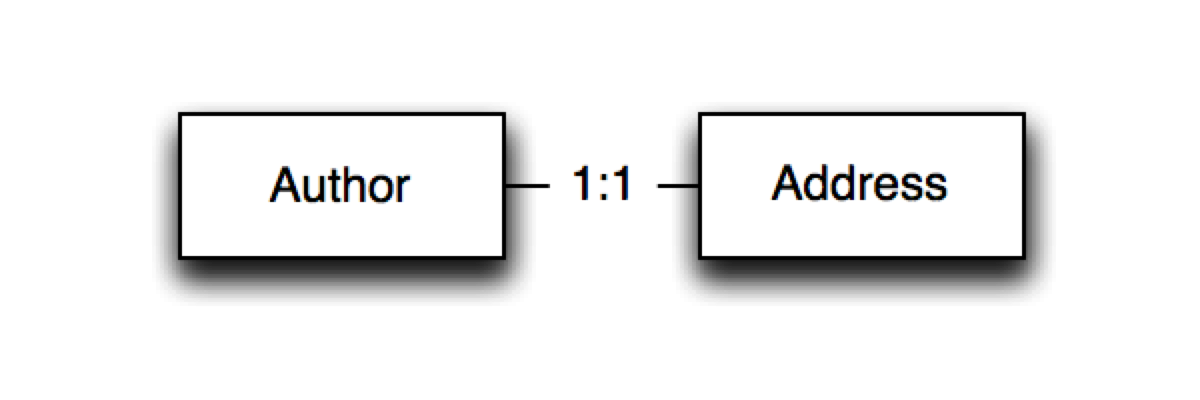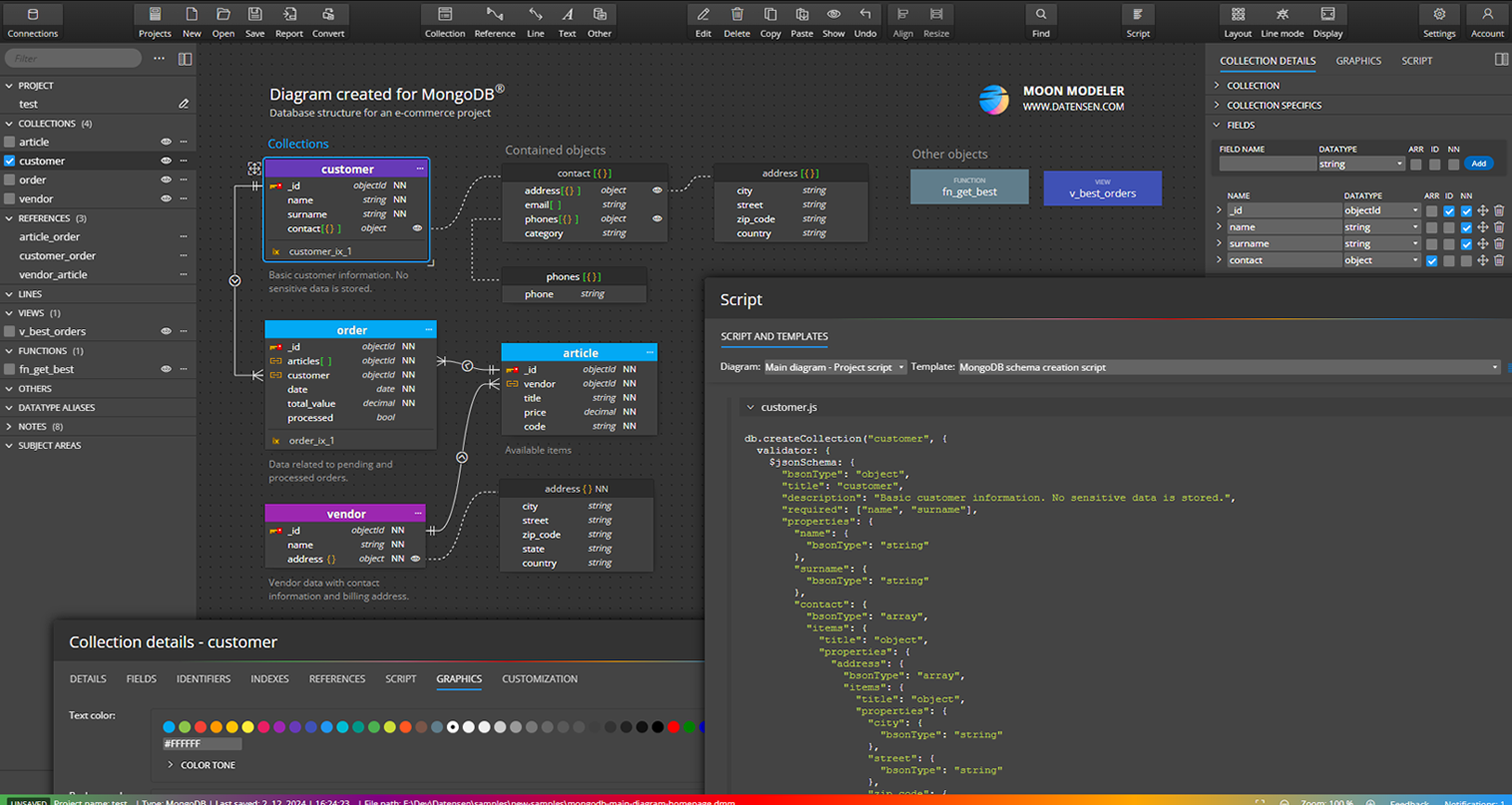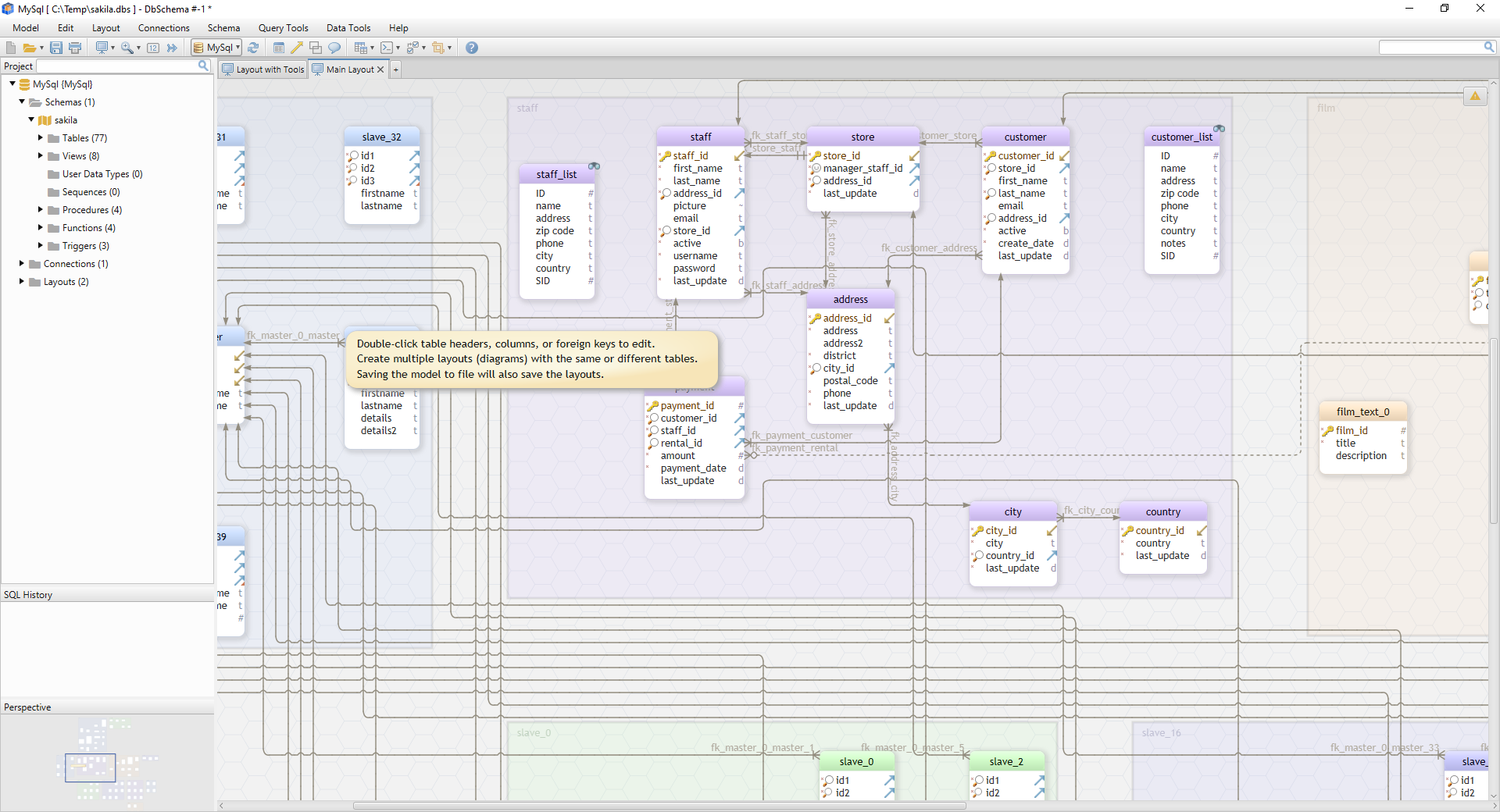

To maintain a good performance of your database, you have to implement a smart indexing system that will streamline your write and read operations. They will be created only locally for design purposes. In DbSchema you can also create foreign keys for MongoDB. Further, you are able to modify the objects right in the diagram just by clicking on them. It will deduce the schema by reading the collections & documents just like in the image below. Being able to view the diagram will have a great impact on the way you plan your MongoDB design.ĭbSchema is a tool that does this job very well. The best choice here is to embed the N side (addresses) in the parent document (persons):Įven though MongoDB is “schemaless”, there are still ways to visualize the collections as diagrams. Is it “one-to-few”, “one-to-many” or “one-to-squillions”? Each relationship will have a different modeling approach.įor example, below we have a “One-to-few” cardinality example. So, before starting, everyone should consider the cardinality of the relation. As we’ve seen in the first tip, knowing when to normalize or denormalize is very important. Many beginners fall into the trap of embedding an array of documents into the parent table and this is not always the best solution. Modeling “One-to-N” relations in MongoDB is more nuanced than an RDBMS. On the other hand, if your database has large documents with constant updates and you want good performance on writes, then you may want to consider normalization.
#Dbschema mongodb design update
On one hand, if you have a database that doesn’t need regular updates, has small documents that grow slowly in size, immediate consistency on the update is not very important, but you need a good performance on reads, then denormalization may be the smart choice. This way of storing data will also take up more space.īefore you choose between the two ways of storing data, asses on the way you will use the database.

It will perform better on reads but will be slower on writes. If you want to receive data from multiple collections, you have to perform multiple queries making the reads slower.ĭenormalization - this is storing multiple data embedded in a single document. When it comes to reading tasks, normalization has its downsides. The data is defined once, making the writing tasks (update) easy. Normalization - normalizing means storing data into multiple collections with references between them. These two define the way MongoDB stores the data. Given the fact that MongoDB works with documents, it’s very important to understand the concepts of normalization and denormalization. The diagram below explains the structure compared to an RDBMS:ĭatabase Design Tips and Tricks Smart Document Management: Normalization vs Denormalization

It stores data in collections, documents, and fields. Unlike a traditional RDBMS, MongoDB doesn’t work with tables, rows, and columns. Before getting to some design tips, we have to first understand how MongoDB structures the data.

#Dbschema mongodb design manual
If you're getting to the point where either you need to do a bunch of joins or a lot of manual management of denormalized data in order to satisfy your queries, then you may need to rethink your schema or even your choice of DB.To get the best out of MongoDB, you have to understand and follow some basic database design principles. If not, see if a little denormalization will help. You may wish to make a list of the queries you expect to perform, and see if they can be done with a minimum of joins with your current schema. Of course, every time you denormalize, you add complexity to your application which must now ensure that the data is consistent across multiple collections (e.g., when you change the server name, you have to make sure you change it in the server_logs, too). That's a fancy way of saying, you may wish to copy the name and userId fields into your server_log documents, so that your queries can avoid having to join with the server collection. OTOH, if your server_log queries always need to pull in data from the server collection as well (say for example the name and userId fields), then it might be worth selectively denormalizing that data. In general, you want to avoid using joins in Mongo (they're still possible, but if you're doing a bunch of joins, you're using it wrong, and really should use a relational DB :-)įor example, if most of your queries are on the server_log collection and only use the fields in that collection, then you'll be fine. Whether this is a good design or not will depend on your queries.


 0 kommentar(er)
0 kommentar(er)
